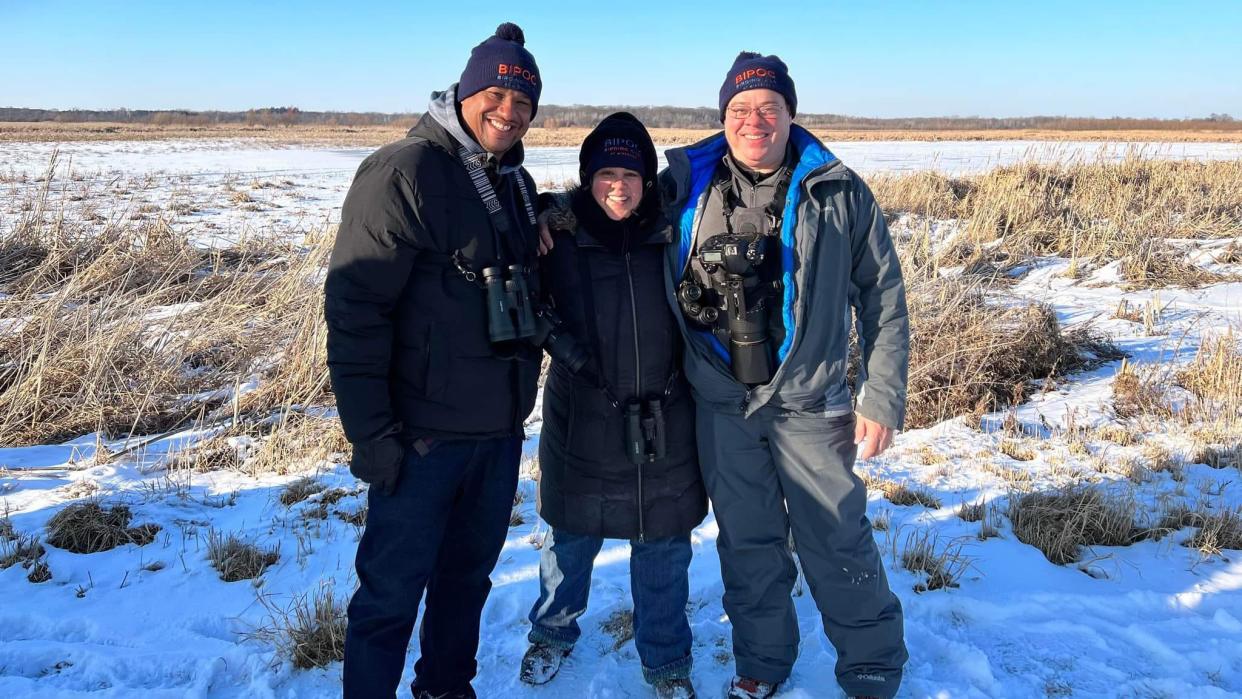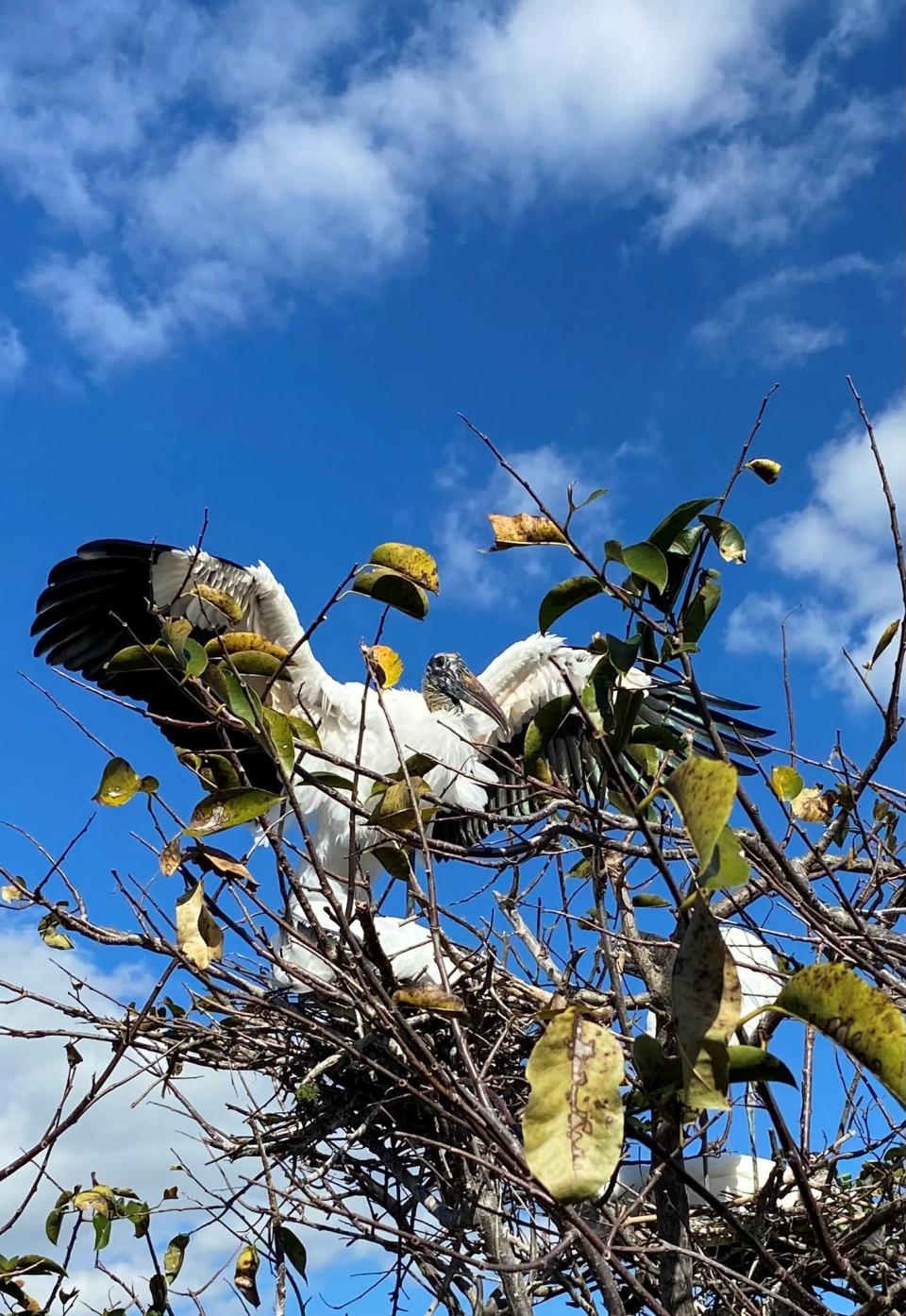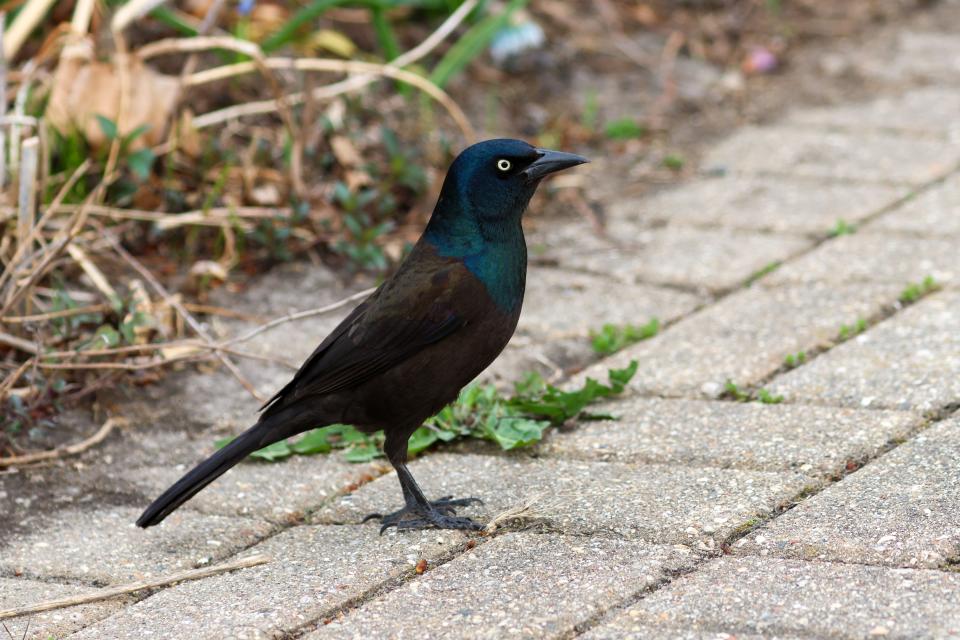OK, I'm a birder. Now what? I talked to an expert about getting started in avian appreciation

I became a birder at 4 p.m. on Feb. 14 at the Wakodahatchee Wetlands in Delray Beach, Florida.
Wakodahatchee is a 50-acre wetland created on property that was previously used by a wastewater utility. Now it features water, trees and a three-quarter-mile long boardwalk. It is homes to zillions of birds that attract gajillions of bird watchers and photographers. It's so popular that armed security guards keep the peace at the site's limited parking area.
When we – me, my wife, her two sisters and brother and their spouses ‒ visited Wakodahatchee, we had to wait in a line of traffic for people to leave the site in order for us to park and walk in. I was taken aback by the popularity of the place; I don't think I ever had to wait in line to go to a park in Wisconsin. As soon as we began our stroll on the boardwalk, I saw why.
There were birds, birds, birds. Big ones. Little ones. Friendly chirping ones. Squawking middle-sized ones. Creepy large ones with murder in their eyes.
I could not identify any of them. Luckily, my wife and in-laws knew most of them, so I learned I was walking among storks, egrets, cormorants and more. I was on my own when I wondered what a bird with a red kind of hood on its beak was, so I turned to a guy who was standing next to me with a camera the size of a bazooka and asked him.
"That's a moorhen," he said, without rolling his eyes or adding the phrase "you idiot." Instead, he recognized me as a tourist, and went on, "They're really common around here. I get a lot of them in my backyard, and I have to hose off my patio every day, because they, pardon my language, s--- all over everything."
I felt this wave of goodwill wash over me at that moment. At first I thought it might be because of the heat. I'm not used to 85 degrees and blazing sun in mid-February. But then I realized that it was because of the genuine human connection I had with this friendly bird photographer. And also because I learned something new about a species of bird. I wanted more.
Hey, I thought to myself, I'm a birder.
While in Florida, I kept a list of all the new birds that I saw, and it exceeded 20. And when I got home, I had a fresh, new appreciation of the birds that fly and squawk and nest among us here in the Badger state.
I recognized birds that I've seen around for years, of course. I know crows and robins and Canada geese. But I realized there were many that I didn't know, some birds I had seen for years, but never learned what their real names were. Every little bird that visited in the winter was a "snowbird." Kris would tell me the real names of the birds ‒ crested chickadee or whatever ‒ but the real names didn't stick. Who cared what their names were, anyway? I appreciated them, enjoyed their antics. What did their names matter?
But now it did matter. I wanted to write down their names on a list. But without someone to ask, I was kind of at a loss about how to progress forward.
How could I list birds if I didn't know their names? And if I didn't know their names, how could I look them up in the bird book? As I mulled that Catch-22 conundrum, I did something smart. I reached out to Dexter Patterson.

'Let's go!' But start small and 'give yourself some grace.'
Patterson, 42, of Madison is known as @wiscobirder on Twitter. With his signature phrase "Let's go!", his feed is full of infectious enthusiasm for birds and birding. Patterson is a co-founder of the BIPOC Birding Club of Wisconsin, a group designed to help more people from diverse backgrounds get into birdwatching. After I told him about Florida and my birding conundrum at home, he told me he understood the place I was at.
He was there once himself.
"I always tell people that I always liked birds, but I never gave them the attention they deserved," he said.
That changed more than a decade ago when Patterson was a non-traditional student at Madison Area Technical College. He ran across a video of an osprey diving into the water, and coming out with a fish in its talons. Everything about the video amazed Dexter: "I was done. I was just struck. I was like, 'What in the world did I just witness?'"
Patterson's academic adviser, Jeff Galligan, happened to be a birder. And when Patterson asked Galligan about the bird video, Galligan responded by sending Patterson a batch of osprey photos he had taken. Just like that, Galligan became Patterson's birding mentor as well as academic adviser. Then he would join Patterson in forming the BIPOC Birding Club.
First, Patterson aimed to learn "as much as I could" about ospreys, then his vistas widened. "I said I'm going to learn as much as I can about every friggin' bird in this state," Patterson said. He's never looked back.
The key for me at this point, Patterson said, is to start with small steps.
"Initially it does seem daunting, so give yourself some grace," Patterson said. An initial step, he said, is to get a birding field guide that covers Wisconsin.
"I like the ones by my friend, David Sibley," he said.
Another option is to download a guide app on your phone, he added. Two put out by Cornell University in New York, Merlin and e-Bird, are excellent, Patterson said.
"What's cool about these apps is that they allow Cornell to accumulate data," Patterson said. "So you're participating in citizen science at the same time when you use their tool."
There's no need to wander far to find birds, either, Patterson said.
"Start a backyard bird list; it really opens you up to how many birds there are," he said. "It starts to spark that curiosity."
Once the flame gets going, then you'll find yourself at a local park, exploring wetlands, finding public lands and preserves to delve deeper and deeper into birding.
Patterson said as the hobby blooms, people find birding helps bolster mental and physical health. You're getting out and walking, "one of the best exercises there is," he said. And even though his videos are high-energy affairs, he said sitting and watching birds calms him down, gives him peace.
I'm just dipping my toe in the birding water, but I've found that actively watching birds puts me in the here and now, gives me focus. I hope that it also will give me tools that help me improve my focus. If you're watching birds, you're not scrolling through social media sites or constantly scanning news headlines.
"Just sit back, and develop an appreciation of the natural world," Patterson said. "Birding definitely motivates me to want to keep going, to stay outside. There are amazing benefits that our feathered friends can offer."
RELATED: The BIPOC Birding Club of Wisconsin is busting stereotypes about birdwatching
RELATED: Conservation groups issue an SOS for Wisconsin songbirds

Starting out a half-assed birder
My friend, Bob Dohr, an assistant editor and reporter with the Milwaukee Journal Sentinel's Now News Group, came down with birding fever over the course of the past few years. Like me, he's always been an outdoors-type person. He's a skier, hiker, runner and cyclist. And when he started jumping into photography as a hobby, birding sort of came along for the ride.
As he improved his photography skills, he's taken more and more photos of birds. And if he's taking photos of birds, Bob said, he wants to know exactly what those birds are.
Last weekend the weather was terrific when Bob and I met in Madison for a bike ride from Olbrich Botanical Gardens to the University of Wisconsin Arboretum and back. We stopped for coffee and snacks and shopped at a bike shop, and then to cap the day off, did some birding at Olbrich.
Bob revels in the details of photography and birding. This suits his personality, which is very tidy and organized. My personality is unkempt and chaotic, so when we are together, we learn from each other. Or at least I know I learn from him.
As I've watched him take photos through the years, and as we walked through Olbrich while he took a variety of shots, I realized that I could never be a photographer like Bob (I'm more of a snapshot guy) and I probably won't ever be a deep-dive birder such as Patterson. Whoof, I'm not sure I have the patience for that.
As Bob told me for the third time that the call I was hearing was a cardinal, not a robin, I've decided that I will be a half-assed birder. I will do my best to understand what the birds are, what they are like and how they fit into this world we share. I'll get around to downloading Merlin one of these days, and I'll page through the field guides.
I'd like to learn more bird calls. Bob explained to me that many birds have both "calls" and "songs," so I guess I'll have to get familiar with that, too. For me, birding is going to about appreciating these animals.
Along the way I probably will misidentify my share of birds I see, and I'll be OK with that. It's a start.
"Just pay attention. Just pay attention, right?" Patterson told me. "Once you start paying attention, you are a birder."
Features reporter Keith Uhlig is based in Wausau. Contact him at 715-845-0651 or kuhlig@gannett.com. Follow him at @UhligK on Twitter and Instagram or on Facebook.
This article originally appeared on Wausau Daily Herald: Wisconsin birdwatching expert shares how to get started in birding

